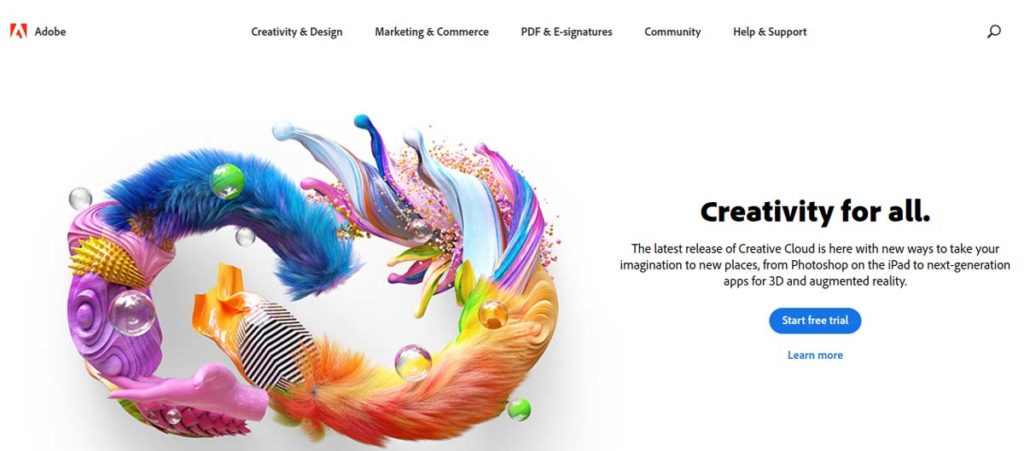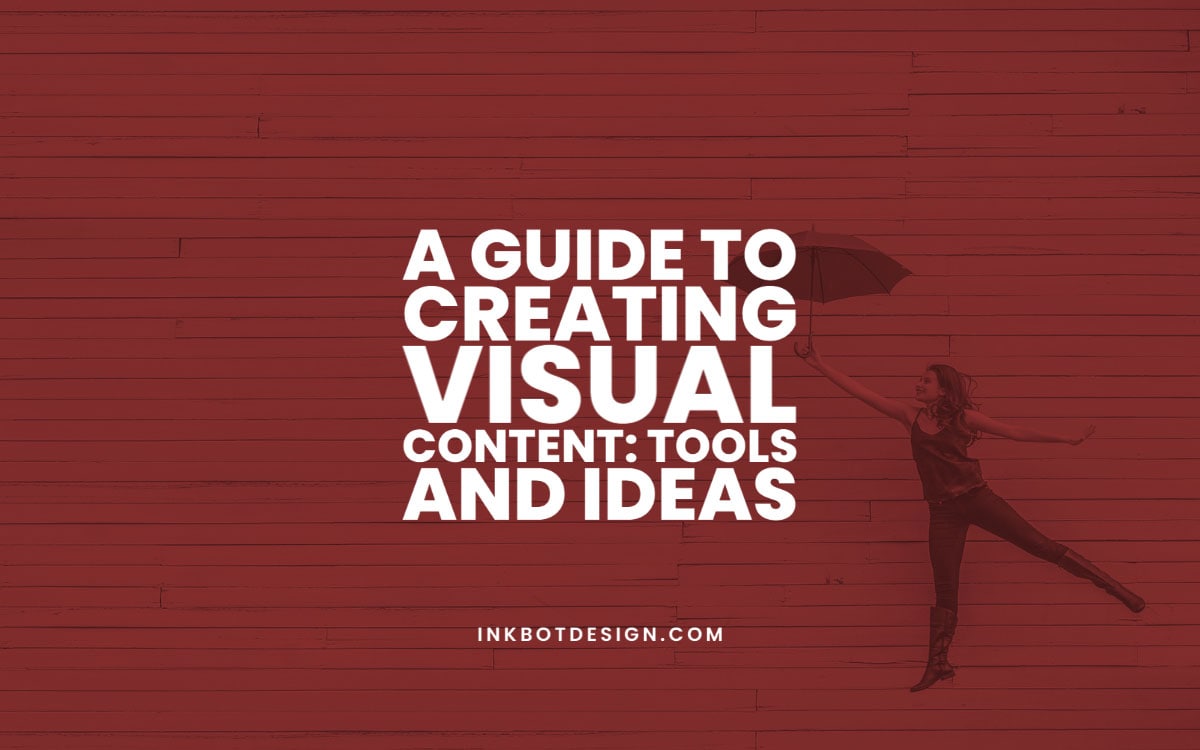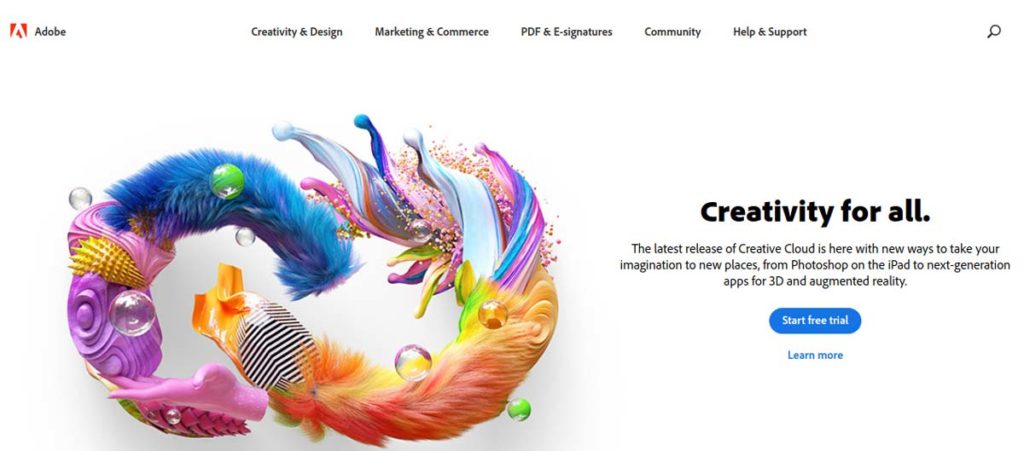A Guide To Creating Visual Content: Tools And Ideas
Everyone has long known about the enormous role that valuable and informative text plays in content marketing. Only the laziest has not written about it.
But for some reason about the use of images in content is said very rarely. But they are the “icing on the cake”, which allows you to draw more attention to your brand.
How Creating Visual Content Helps With Promotion
Graphics in content marketing have essentially three functions:
“Embellishment” – announcements on social networks, article “caps”, or blog thumbnails. In the articles on most sites, images are also used mainly for beauty (well, and a little for SEO). And the owners of article pages set certain conditions: 5-10 images per article of 5-10 thousand characters simply because it is better. And whether it is necessary to demonstrate after each paragraph of an article about a business plan another handshake, a bundle of money, or a graph with the growth of income – a rhetorical question.Informative. These are all kinds of tables, charts, screenshots, infographics. It can also include, for example, quotes from experts and famous people in a graphical format, photos of the step-by-step process of creating something, and much more.Entertaining. Some meme, a gimmick, a comic strip. You can say that such pictures contain information (text), but only for entertainment purposes. However, comics can also be meaningful.
If you don’t have ideas in your head for valuable illustrations, here’s a mini cheat sheet. What information you can put on a picture:
Numbers. Draw a graph, chart, table for a visual demonstration.Lists. If there is a hierarchy, it is better to draw a scheme. If the list is simple, you may draw it as a mini-infographic with icons.Action algorithms. Translate step-by-step textual instructions into clear and straightforward graphical schemes.Formulas, rules. This applies more to educational sites. “Chalk” successfully practices the design of the rules with simple illustrations. You can also decorate formulas with a picture for better perception. It is up to you how to do it. The main thing is that this will make it more straightforward and more attractive.Interesting facts, essential points, valuable tips, quotes, etc. You must use a capacious, short thesis statement. Typically, such information arranges the tag <quote>, pre-prescribing styles, but you can go further and take a picture, which readers can then share on social networks.
Preparing To Create Images
Tools

You don’t have to buy any fantastic editors to create good graphics. I’ve been using Photoshop my whole life and only recently discovered the Gimp.
At first, it was annoying and awkward, but when I spent an hour studying the interface, it became clear that it was more than enough for my purposes, even for drawing illustrations from scratch.
If you’re not an artist or designer, then feel free to download Gimp.
Besides Gimp, I also use PowerPoint for creating visual content (primarily for informational or humorous pictures). It has basic shapes, lines; you can add your drawings, icons, vectors, lettering, play with fonts – basically, the basic kit of a marketing designer.
In general, I would advise against getting hooked on quick solutions like online editors. I try to use Canva and other similar services as little as possible.
Often ideas pop into my head that requires non-standard solutions, and “Canva” is full of one-size-fits-all templates. In this case, it is easier to learn to draw from scratch and master Photoshop, Gimp, or any similar editor.
In the future, this will allow you to perform various tasks and implement almost any idea.
In addition, there are many tutorials and masterclasses on working with editors on the web, and learning is not as difficult as it seems.
Spend a few hours studying the essential functions of Gimp, and your arsenal of skills will noticeably expand.
Sources
For infographics, you need sources. The editors already have shapes and lines, but that’s not enough if you can’t draw yourself.
The sources are icons, drawings, photos, diagrams, etc., with which we will accompany our impromptu collage. Something you can take from ready-made, something you can draw yourself.
I prefer free sources, which do not require links in response (Public Domain Image). For example, Pixabay. You don’t even need to register there.
For mini infographics design, non-standard fonts are also helpful. It is desirable to choose a licensed one—for example, Google Fonts.
It depends a lot on a well-chosen font, so do not spare time to search. I, for example, have found “my” font, which I use almost always and everywhere.
But for a change, of course, in the arsenal should be a couple more or three good options.
Vector illustrations, clipart, and icons are necessary too because they help me represent information nicely and clearly. I often use Public Domain Vectors and Openclipart.
Compared to other similar sites, the vectors there are not bad. Clker has a great selection but too many primitive and informal pictures. Be prepared for the fact that for free, you will not get a masterpiece.
But you will be able to choose more or less appropriate variants. Or, conversely, you can get inspired by ideas while choosing from the available pictures.
You can find excellent illustrations and photos on Freepik, much better than those offered by public domain stocks, but it gets a little complicated because of licensing.
I often have to use illustrations from this site, but putting a link in every article under every image is a shame.
I asked support if I could put a one-time-through link in the sidebar or, for example, on the “About Us” page to avoid constant attribution.
The answer pleased me:

It turned out that it is enough to put a link once. For example, in the footer. The main thing – that it was visible. Consequently, you can not place it on the inner pages of the site.
6 Ways of Creating Visual Content and the Best Types
Now let’s talk more about specific types of graphics that you can use on your own or create something new.
1 – Photos

Photographs have a pretty wide range of uses. They are great as illustrations for text and announcements on social media.
Most of the time, I use photos as a background to convey some information.
For example, if you want to write about growing cucumbers, you can not just insert a photo of cucumbers between paragraphs but also accompany it with text. Take the photo as a background and write some helpful advice or a fact.
The photo can be found in stock or make your own if it is very necessary or possible. In the second case, consider the quality of the photo. If the picture is too amateurish, it may be better to take a stock version.
Another very unusual idea is to photograph hand-drawn drawings, schemes, infographics. Designers and artists often practice it when creating visual content.
2 – Drawings
Your original designs not only help you execute and convey your ideas, but they also help you stand out from your rivals, who are still “stuck on the stock needle.”
Henneke Duistermaat, the author of the Enchanting Marketing blog, took six months of art classes, and since then, her blog has had a significant transformation.
She hasn’t spent a cent on an illustrator. She also promotes herself as a specialist by publishing self-drawn infographics on third-party resources.
Henneke invented a cartoon character that she associates with herself and represents her brand.
This funny little person is difficult to confuse with anything else, so the author is easily recognised on any resource, wherever she has published.
You could say that this approach allowed her to stand out among the masses of other blogger-copywriters.
The idea is the basis of everything. You can beautifully and tastefully implement what you have in mind, but the picture will remain unnoticed if the initial idea is not good. Or rather, viewers will notice it, but only a few people will share it, and the effort will be in vain.
So before you draw something, read your text and think about what image would best express the main idea or complement what was said.
Pick up associations. Even a topical joke on the article’s topic in the form of a comic strip can add more than one hundred points to its value.
3 – Trying to draw by yourself

As you have already realised, you don’t have to go into detail and draw every element to illustrate something successfully.
If you’ve never drawn before, start with basic geometric shapes and lines. As practice shows, you can use them to draw anything.
Comic book artists know how to depict a particular action or process on paper so that the reader understands precisely what’s going on and creates the illusion of movement.
All sorts of “BAM!” and “BATCH!” as they strike, visual effects like dust columns when running and sparks from the eyes during a fight – all this adds dynamics to a static picture. In primitive illustrations, this is also quite realistic.
In principle, you can learn anything by looking at how others do it. So, if you’re going to paint yourself, spend some time studying standard techniques and methods.
There are plenty of masterclasses and step-by-step instructions online for drawing almost anything.
A great helper in the drawing references. Artists use photos, but it’s easier for us to take ready-made drawings. But do not plagiarise someone else’s work exactly.
If you want to draw a business person, search for several drawings in different styles. In doing so, they will probably have something in common: a business suit, briefcase, glasses, etc.
If all these examples don’t inspire you to do something of your own, take one of the drawings as the basis and “steal” the details from the others.
“Google” is beneficial in terms of examples for creating visual content. If you need to draw a sitting person, search for them.
If you decide to draw comics, start a separate folder with pictures of people in different positions, from different angles, and with different emotions.
At first, you can sketch, but you will learn how to draw the right scene without peeking in time.
4 – Comics
Let’s take a look at free and easy tools to create comics without having to draw anything.
Probably the most incredible thing to create comics on the web. Large selection of characters, locations, objects. Each character has a set of facial expressions and poses that you can change.
Here, too, you can choose a character, a background, and different objects. The site is a little less convenient than the previous one but still worthy of attention.
There are only black and white stationary characters and objects. There are no locations—another of the pluses – funny but very strange characters.
5 – Diagrams
Diagrams, mind maps, and various diagrams can already be a great illustration of text on their own. But you can also use them as part of infographics when creating visual content.
It’s easy to draw diagrams. There are many tools for that. Same products package Microsoft Office, installed on your computer may be enough. Although for a change you can consider the online services.
The most convenient of the free ones is Draw.io. It has a lot of ready-made templates for any purpose. You just choose and change to your liking.
6 – Screenshots

Screenshots are often used for articles, but they are not always done to the best advantage for the reader.
It is essential to be able to mark screenshots to clarify your thoughts properly.
In step-by-step instructions, this is necessary. Otherwise, the user can spend hours staring at the screenshot, not understanding what they should do.
I used Prt Sc to capture the screen and then a standard Windows program to crop the screenshot and make annotations.
I didn’t want to install any additional software; it didn’t seem worth it. But screenshot software, as it turned out, really simplifies life.
They allow you to grab a part of the screen, add arrows, hide things without pasting them, and do it with much better quality than Paint.
I use free Lightshot and Joxi. They are more than enough. Joxi also has a handy extension for Chrome browser, although you can do everything in the desktop version.
Conclusion
The topic of creating visual content in digital marketing is so vast that we could talk about it endlessly. But the best thing to do is to get into practice and start implementing your ideas right now.
It does not matter that you do not have a penny in your pocket and the artist’s talent you do not have. Everyone started somewhere. I hope that this article on creating visual content was helpful 
Author Bio: Hannah Butler works as a content writer in write my paper 4 me, a company that provides expert paper help for students. She likes sharing her experience in articles in such spheres as Web and Graphic Design, Digital Marketing. In her free time, Hannah enjoys rock climbing and bike riding.

The post A Guide To Creating Visual Content: Tools And Ideas is by Stuart and appeared first on Inkbot Design.
Read more: inkbotdesign.com
